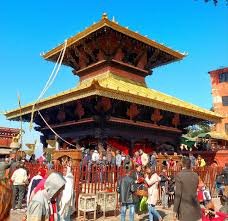Exploring the Sacred Mankamana Temple: A Journey to Nepal's Wish-Fulfilling Goddess
Nestled amidst the breathtaking landscapes of Nepal, Mankamana Temple is one of the most revered temples, known as the “Temple of the Wish-Fulfilling Goddess.” Located in the Gorkha district, about 105 kilometers from Kathmandu, this sacred site attracts thousands of devotees and tourists every year, all seeking blessings, fulfillment of wishes, and spiritual solace.
A Temple with a Rich Legend
The legend behind Mankamana Temple is both enchanting and awe-inspiring. Dedicated to Goddess Bhagwati, an incarnation of Parvati, the temple is believed to grant the wishes of anyone who makes a sincere prayer. According to ancient tales, Mankamana Devi was a queen with divine powers. She is said to have protected her people with her wisdom and strength. After her death, her spirit became the goddess Mankamana, and it’s said that she continues to fulfill the wishes of her devotees.
Architectural Beauty
Mankamana Temple is not only spiritually significant but also an architectural marvel. The temple reflects traditional Nepalese pagoda-style architecture with intricate woodwork and carvings. The sanctum sanctorum is adorned with symbols and decorations that reflect Hindu iconography. The temple, with its peaceful surroundings and traditional architecture, offers visitors a sense of calm and reverence.
Getting There: A Cable Car Ride with Stunning Views
One of the most exciting ways to reach Mankamana Temple is through the Mankamana Cable Car. This cable car ride, spanning around 2.8 kilometers, provides stunning aerial views of the Trishuli River, green valleys, and terraced hillsides, making the journey to the temple as memorable as the destination itself. The cable car ride itself is an adventure, attracting both devotees and tourists who come to experience the serene beauty of the Himalayan landscape.
Rituals and Worship
Visitors can observe the traditional worship practices performed at Mankamana Temple. Devotees often bring offerings like flowers, red cloth, vermilion, and coconuts to honor the goddess. Animal sacrifices, though a controversial practice, also take place during festivals, particularly around Dashain and other major Hindu festivals.
Festivals and Celebrations
The temple becomes especially lively during Navaratri and Dashain, when thousands of devotees gather to pay homage to Goddess Mankamana. These festivals are celebrated with grandeur, with devotees performing rituals, singing hymns, and sharing the spiritual essence of the place.
A Pilgrimage Beyond Religion
While Mankamana Temple is primarily a Hindu pilgrimage site, it has also attracted visitors from various backgrounds who are captivated by its mystical energy and the beautiful surroundings. Whether one visits for religious reasons, cultural interest, or simply for the panoramic Himalayan views, the Mankamana Temple experience is unforgettable.
Planning Your Visit
Location: Gorkha District, Nepal
Best Time to Visit: October to March for favorable weather and festival season
Cable Car Hours: 9:00 AM to 5:00 PM (Closed during specific national holidays)
Conclusion
A visit to Mankamana Temple is much more than a spiritual journey; it's a journey through Nepalese culture, nature, and history. The majestic views, the serene ambiance, and the hope-filled atmosphere make Mankamana Temple an ideal destination for anyone seeking a unique blend of spirituality, natural beauty, and cultural richness. For those who believe in the power of divine blessings, Mankamana Devi awaits, ready to turn dreams into reality.
